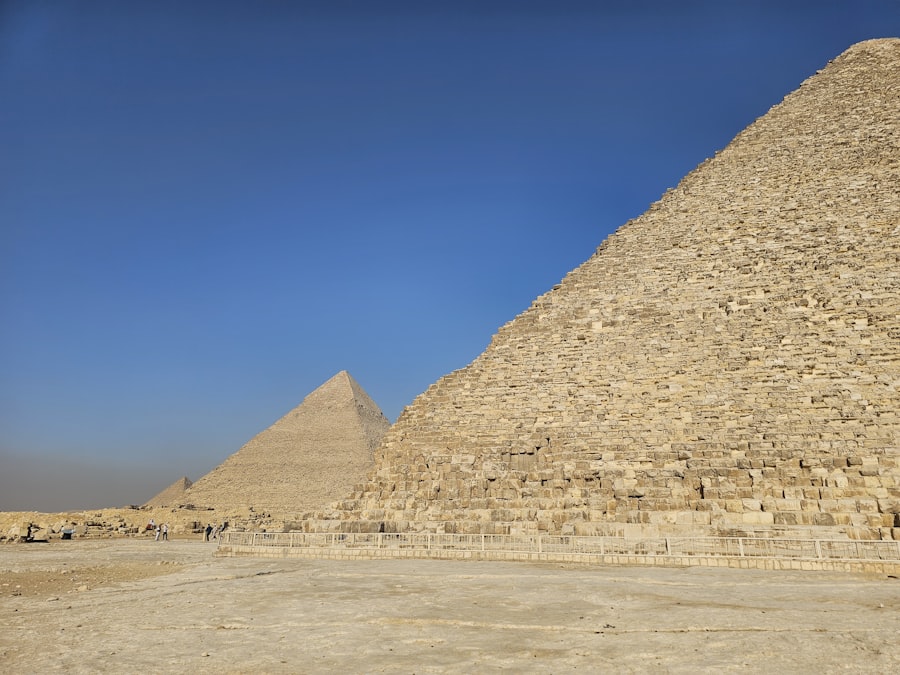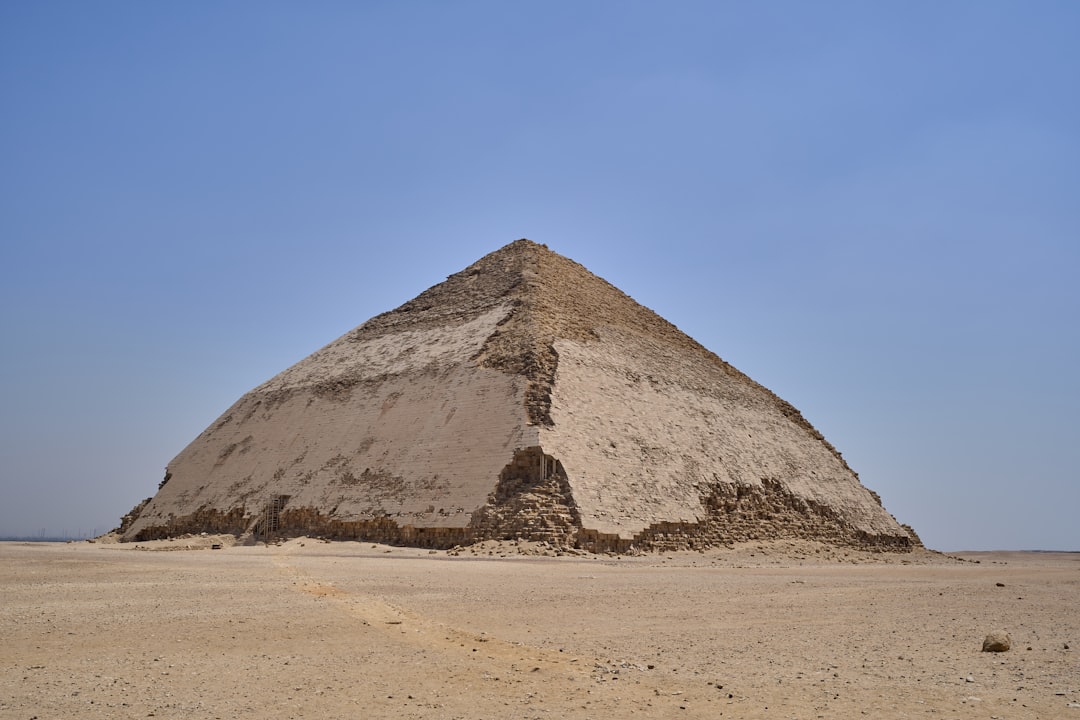The construction of ancient pyramids has long captivated historians, archaeologists, and the general public alike. These monumental structures, primarily associated with ancient Egypt, stand as a testament to the ingenuity and capabilities of early civilizations. The pyramids, particularly the Great Pyramid of Giza, have sparked countless inquiries into the methods and technologies employed in their construction.
The sheer scale and precision of these edifices raise questions about the tools, labor, and organizational skills that were necessary to achieve such remarkable feats. As researchers delve deeper into the mysteries surrounding these ancient wonders, they uncover a complex interplay of technology, mathematics, and human effort that contributed to their creation. Understanding the construction technology of ancient pyramids is not merely an academic pursuit; it offers insights into the cultural and societal structures of the time.
The pyramids served not only as tombs for pharaohs but also as symbols of power and religious significance. The methods used to build these structures reflect the values and priorities of the societies that created them. By examining the technological advancements and organizational strategies employed in pyramid construction, one can gain a clearer picture of how these ancient civilizations operated and thrived in their respective environments.
Key Takeaways
- Ancient pyramid construction involved advanced technology and engineering skills.
- The mystery of how the pyramids were constructed continues to intrigue researchers and historians.
- Various theories and speculations have been proposed to explain the construction of the pyramids.
- The tools and techniques used in pyramid construction were sophisticated and innovative for their time.
- Mathematics and engineering played a crucial role in the design and construction of the pyramids.
The Mystery of Pyramid Construction
The construction of pyramids remains shrouded in mystery, with many aspects still not fully understood. Despite extensive research, the exact methods used to transport and assemble the massive stones that comprise these structures continue to elude definitive explanation. The Great Pyramid of Giza, for instance, is estimated to have been built using approximately 2.3 million blocks of limestone and granite, some weighing as much as 15 tons.
The logistics involved in moving such heavy materials over considerable distances present a formidable challenge that has puzzled experts for centuries. Moreover, the alignment and precision of the pyramids add another layer of intrigue. The Great Pyramid is aligned with remarkable accuracy to the cardinal points of the compass, which raises questions about the astronomical knowledge possessed by the ancient Egyptians.
How did they achieve such precision without modern tools? The mysteries surrounding pyramid construction extend beyond mere physical challenges; they encompass the cultural and spiritual beliefs that motivated their creation. Understanding these mysteries requires a multidisciplinary approach that combines archaeology, engineering, and anthropology.
Theories and Speculations

Over the years, numerous theories have emerged regarding how the ancient Egyptians constructed their pyramids. Some scholars propose that a straight or circular ramp system was used to transport stones to higher levels as construction progressed. This theory suggests that workers would have dragged stones up these ramps using sledges lubricated with water or other substances to reduce friction.
However, this theory has its limitations, particularly concerning the steepness of the ramps required for taller pyramids. Another popular theory posits that a series of internal ramps were utilized within the pyramid itself. This approach would allow workers to transport stones upward without the need for extensive external ramps that would require significant space and resources.
While this theory offers a plausible explanation for some aspects of pyramid construction, it also raises questions about how workers would have accessed these internal ramps during construction.
Tools and Techniques Used in Pyramid Construction
| Tool/Technique | Description |
|---|---|
| Leverage | Used to lift and move heavy stones into place. |
| Ramps | Constructed to transport stones to higher levels of the pyramid. |
| Pulleys | Assisted in lifting and positioning large stones. |
| Leveling Tools | Ensured precise alignment and leveling of stones. |
| Copper Chisels | Used to shape and carve stones for a precise fit. |
The tools employed in pyramid construction were rudimentary by modern standards but remarkably effective for their time. Archaeological findings suggest that workers used copper chisels, wooden sledges, and stone hammers to shape and transport the massive blocks. Copper tools were particularly significant given their ability to work with softer stones like limestone, while harder materials like granite required more sophisticated techniques.
In addition to tools, techniques such as leveraging and counterbalancing played crucial roles in moving heavy stones. Workers likely employed simple machines like levers to lift stones into place or to adjust their positions during assembly. The combination of these tools and techniques reflects a deep understanding of physics and mechanics, showcasing the ingenuity of ancient builders who operated without the benefit of modern technology.
The Role of Mathematics and Engineering
Mathematics was integral to pyramid construction, influencing everything from design to execution. The ancient Egyptians possessed a sophisticated understanding of geometry, which allowed them to create precise measurements and angles necessary for constructing pyramids. The use of ratios and proportions ensured that each pyramid maintained its structural integrity while achieving its intended aesthetic appeal.
Engineering principles were also at play in pyramid construction. The design of the pyramids required careful consideration of weight distribution and stability.
This blend of mathematics and engineering not only facilitated the successful completion of these monumental structures but also laid the groundwork for future architectural endeavors.
Theories on the Transportation and Placement of Massive Stones

The transportation of massive stones from quarries to construction sites is one of the most debated aspects of pyramid construction. Various theories suggest different methods for moving these heavy blocks over considerable distances. One prominent theory involves using sledges pulled by teams of workers across wet sand, which would reduce friction and make it easier to transport heavy loads.
Another theory posits that logs may have been used as rollers beneath the sledges, allowing workers to move stones more efficiently. This method would require significant coordination among laborers but could potentially explain how such large stones were transported without modern machinery. Regardless of the method employed, it is clear that transporting these massive stones required not only physical strength but also strategic planning and organization.
The Use of Labor and Organization in Pyramid Construction
The labor force behind pyramid construction was vast and well-organized, comprising skilled workers, laborers, and support staff. Contrary to popular belief that slaves built the pyramids, evidence suggests that a workforce of paid laborers was responsible for their construction. These workers were likely organized into teams based on skill level, with specialized roles assigned to ensure efficiency.
The organization of labor extended beyond mere task allocation; it involved complex logistical planning as well. Workers needed food, shelter, and medical care during construction periods, necessitating a well-structured support system. This level of organization reflects not only the capabilities of ancient Egyptian society but also its commitment to monumental projects that served both practical and symbolic purposes.
Comparisons with Modern Construction Methods
When comparing ancient pyramid construction methods with modern techniques, stark contrasts emerge. Today’s construction projects benefit from advanced machinery, computer-aided design (CAD), and sophisticated materials that allow for greater efficiency and precision. However, many principles from ancient construction remain relevant; for instance, project management techniques developed by ancient builders can still inform contemporary practices.
Modern engineers often look to ancient structures for inspiration when designing new buildings or infrastructure projects. The durability and longevity of pyramids serve as a reminder of the importance of sound engineering principles and materials selection in construction practices today. While technology has evolved dramatically since ancient times, the fundamental challenges of building large structures remain consistent across eras.
Uncovering Ancient Texts and Hieroglyphics
Ancient texts and hieroglyphics provide valuable insights into pyramid construction practices and beliefs surrounding these monumental structures. Hieroglyphics found in tombs often depict scenes related to construction activities, offering glimpses into the lives of workers and their roles in society. Additionally, inscriptions may reveal information about the pharaohs who commissioned these projects and their motivations for building such grand structures.
Scholars continue to decipher these texts in hopes of uncovering more details about the techniques used in pyramid construction. Each discovery adds another piece to the puzzle, enhancing our understanding of how ancient Egyptians approached monumental architecture. These texts not only illuminate practical aspects but also reflect the cultural significance attributed to pyramids as symbols of power and eternity.
Modern Discoveries and Advancements in Understanding Pyramid Construction
Recent archaeological discoveries have shed new light on pyramid construction methods, challenging long-held assumptions about how these structures were built. Advances in technology, such as ground-penetrating radar and 3D modeling, have allowed researchers to explore previously inaccessible areas within pyramids and surrounding sites. These modern tools have revealed hidden chambers and potential internal ramp systems that could provide answers to longstanding questions about construction techniques.
Furthermore, interdisciplinary collaboration among archaeologists, engineers, and historians has led to a more comprehensive understanding of pyramid construction practices. By combining expertise from various fields, researchers are piecing together a more nuanced picture of how these monumental structures were created. As new discoveries continue to emerge, they promise to reshape our understanding of ancient engineering feats.
Implications for Future Construction and Engineering Practices
The study of ancient pyramid construction holds significant implications for contemporary engineering practices. Lessons learned from the organizational strategies employed by ancient builders can inform modern project management approaches, particularly in large-scale construction projects where coordination among diverse teams is essential. Moreover, understanding how ancient civilizations overcame challenges related to material transportation and structural integrity can inspire innovative solutions in today’s construction industry.
As society faces increasing demands for sustainable building practices, revisiting ancient techniques may offer valuable insights into resource management and environmental considerations. In conclusion, the exploration of ancient pyramid construction technology reveals a rich tapestry woven from ingenuity, mathematics, labor organization, and cultural significance. As researchers continue to unravel the mysteries surrounding these monumental structures, they not only enhance our understanding of history but also provide valuable lessons for future generations in engineering and construction practices.
Recent studies have shed light on the advanced construction techniques used in pyramid building, revealing secrets that have long puzzled historians and archaeologists. For a deeper dive into these fascinating discoveries, you can read more in the article available at XFile Findings, which explores the innovative methods and technologies that may have been employed by ancient civilizations to construct these monumental structures.
WATCH THIS! Nikola Tesla’s Forbidden Secret: The Great Pyramid Was a Power Plant
FAQs
What are the secrets of pyramid construction technology?
The secrets of pyramid construction technology refer to the methods and techniques used by ancient civilizations to build these massive structures. These secrets include the precise engineering and architectural planning required to construct pyramids with such precision and accuracy.
How were the pyramids constructed?
The exact methods used to construct the pyramids are still a topic of debate among historians and archaeologists. However, it is believed that the ancient Egyptians used a combination of skilled labor, advanced engineering techniques, and innovative tools to quarry, transport, and place the massive stone blocks that make up the pyramids.
What tools and techniques were used in pyramid construction?
The ancient Egyptians likely used a variety of tools and techniques to construct the pyramids, including levers, ramps, sledges, and possibly even simple machines such as pulleys and cranes. They also had advanced knowledge of mathematics, geometry, and surveying, which allowed them to plan and execute the construction with remarkable precision.
Were there any advanced technologies used in pyramid construction?
While there is no concrete evidence of advanced technologies such as alien intervention or levitation being used in pyramid construction, the ancient Egyptians did possess a high level of knowledge and skill in engineering and construction. Their ability to quarry, transport, and place massive stone blocks with such precision is a testament to their advanced technological capabilities.
What are some of the theories about pyramid construction technology?
There are various theories about how the pyramids were constructed, including the use of ramps, internal and external scaffolding, and the pouring of limestone concrete. Some researchers also believe that the ancient Egyptians may have used water or sand to lubricate the movement of the massive stone blocks during construction.
